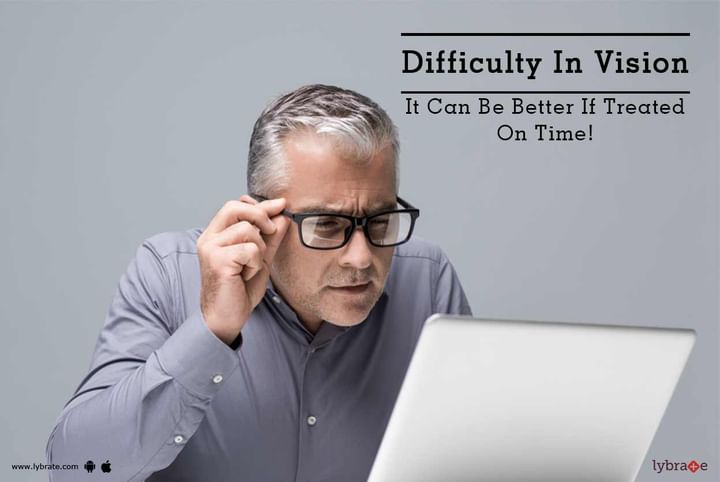Difficulty In Vision - It Can Be Better If Treated On Time!
As you reach the age of 40, you will likely notice changes in your vision. Perhaps you have difficulty reading a book without glasses, or distinguishing between colours. These changes occur as an effect of ageing. However, nowadays people in their teens are also exposed to a host of eye disorders and vision problems, mostly resulting from eye injuries and visual stress.
The most common disorders of the eye, which affect the age group 19-40, are Refractive errors. The following signs and symptoms characterize such disorders-
• Haziness
• Double vision
• Halos or glares when you are surrounded by bright lights
• Headaches
• Squinting
• Eye strain
What are the Refractive errors?
Refractive errors develop when light cannot focus on the retina (the light-sensitive tissue situated at the rear side of the eye) directly due to the shape of the eye. The change in the cornea’s shape, the ageing of the lens, or the length of your eyeball can lead to refractive errors. Most people suffer from one or more of the above conditions.
Type of Refractive Errors:
Following are the most common types of refractive errors-
• Myopia or Nearsightedness - If you have this condition, you will see nearby objects clearly but distant objects will appear blurry. This happens because the light comes to focus right in front of the retina, instead of on the retina.
• Hyperopia or Farsightedness - This condition is just the opposite of myopia. Distant objects are clearly visible but those located close to you appear blurry. However, some people may not observe any problem with their vision at a young age. If you have significant hyperopia, objects at any distance, far or near, can appear blurry.
• Presbyopia - This age-related condition affects your ability to focus on things closely. This happens because as you age, the lens of the eye is unable to change shape to allow the eye to focus on nearby objects clearly.
• Astigmatism - In this condition, the eye cannot focus light onto the retina evenly. As a result, images appear stretched out and blurry.
• Amblyopia or Lazy eye - This vision development disorder begins during early childhood and infancy. In this condition, the eye does not achieve normal visual acuity despite using contact lenses or prescribed glasses. Usually, amblyopia affects only one eye.
Can early diagnosis help treat the problem?
Yes, it can. Your eye care specialist can diagnose refractive errors and detect what exactly is impeding your vision with a comprehensive dilated eye examination. Upon encountering the symptoms mentioned above, one should consult an ophthalmologist at the earliest and get oneself checked.
If the condition is detected early, vision problems due to refractive errors can be treated. The common treatment options include the use of contact lenses, prescription glasses, and surgery (in severe cases).
People with visual problems should also adopt some lifestyle changes to correct their vision - eat more veggies, get adequate sleep and rest, abstain from smoking etc. Additionally, you should get periodic eye check-ups to monitor the condition.



+1.svg)
